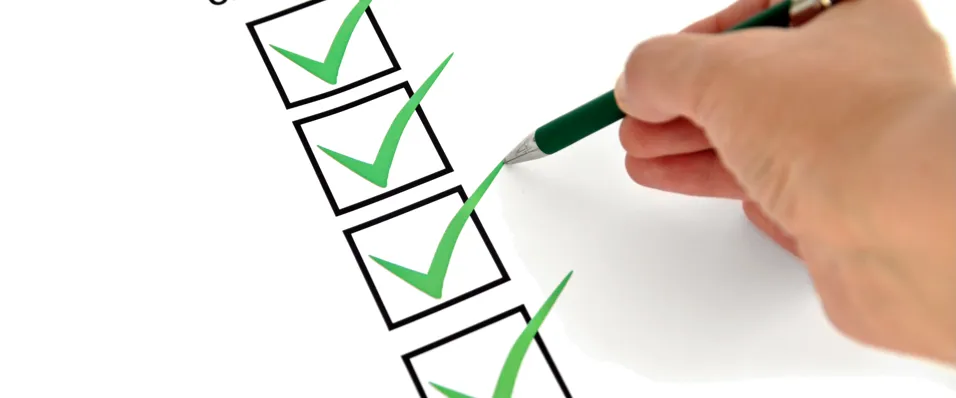
A brief overview of setting Standards at the IET
We all understand how integral BS 7671 is to the electrical engineering industry, but have you ever wondered how other Standards within the sector come to fruition? In this article, Emma Chafer takes a look at how you can get involved in setting standards that will enhance engineering.
Why get involved with standards-setting?
Engineering is a rapidly changing sector that relies on good practice as well as the management and reduction of risk. In this environment, it is essential to work in a manner that embraces innovation, offers maximum efficiencies and improves safety.
The lack of professional standards and guidance for problematic functions in the workplace can be frustrating. However, you can make a difference by contributing your experience and knowledge to improve consistency and working practices through your involvement in Technical Working Groups.
Getting involved in standards-setting not only improves your sector’s results but can be a great step to raising your profile, both within your organisation and the wider industry.
Why set standards with the IET?
The IET creates essential professional standards and guidance in new and emerging areas of industry thanks to its:
- Expert knowledge
- Key engineering contacts
- Vast experience
- Speed to market
- Reputation.
The IET co-publishes BS 7671 Wiring Regulations and has expert knowledge and experience in producing high-level Codes of Practice and guidance. We have many key engineering contacts across a broad range of industries, many of which are in related industry bodies. Our work also influences policy and we work closely with the government in new and emerging areas. It’s not a problem for the IET if there are areas of industry where key guidance is lacking as our vast experience means we can work with industry stakeholders and subject experts to bring about consensus-based standards. Another benefit of setting standards with the IET is the speed which we can bring publications to market. We achieve this is in a much timelier manner than formal standards processes whilst maintaining our robust, consensus-based standards-setting processes.
How can you get involved?
There are four main ways in which you can get involved with setting standards with the IET. All are important aspects of the standards process.
Technical authorship
If you are passionate about your area of expertise and would like to take responsibility as well as gain recognition for important aspects of your industry then being a technical author is one possible option. Our technical authors are industry leaders with a wealth of experience and knowledge and are vital contributors to our publications
Committee membership
Another important way you can get involved is by sitting on a committee which directly influences the work contributed to particular standards and publications. From government departments to manufacturers and industry bodies, we value the input of industry representation on technical committees in order to achieve true consensus of important issues.
Project sponsorship
Having your organisation’s branding alongside the IET on leading-edge standards can help promote your organisation as a leader in your field.
Feedback on draft publications
This is the simplest way to have your say and potentially influence the way in which the IET creates a standard. By joining our mailing list you will be alerted to the publication of drafts for public comment for upcoming titles and be able to provide valuable feedback on the publication’s contents.
What essential standards has the IET brought to new industry areas?
Solar PV, LED lighting technology and electric vehicle charging are just a few of the new areas that The IET has published Codes of Practice on in the past few years.
Code of Practice for Grid Connected Solar Photovoltaic Systems
A group of stakeholders from across the solar PV industry came together with the IET to create consensus-based guidance on all stages of solar PV installation at both small and large scales.
Recommendations for Energy Efficient Exterior Lighting Systems
The IET was approached by a government department to create a document providing guidance to local authorities involved with street lighting projects.
Code of Practice for Electric Vehicle Charging Equipment Installation
With the rise in the use of electric vehicles, charging points were fast becoming necessities in towns across the UK, but no guidance previously existed to ensure that they were installed safely and consistently to industry standards.
What are the new areas of standards are in development?
Code of Practice for Building Controls and Building Energy Management Systems (BEMS) – applying BS EN 15232 for energy efficiency
A practical guide for electricians, energy managers and other interested parties working in non-residential buildings, giving advice on how to review existing building controls in properties and find areas for improvement and cost savings.
Guide to smart homes: design advice for electricians
A guide to help formalise the transition for electrical installers who wish to embark on opportunities within the smart homes industry. Guide to Data Centre Power Systems
A comprehensive review of the various power systems that can be applied to diverse types of data centres that meet different ICT business models and risk profiles – from social networking to financial institutions. It will be a 'go-to' guide for data centre investors, end-users, operators, designers, equipment suppliers, installing contractors and training organisations.
Find out more about getting involved. After all, why wouldn’t you want to get recognised for your skills and expertise as you influence better ways of working to enhance practices within your sector?
